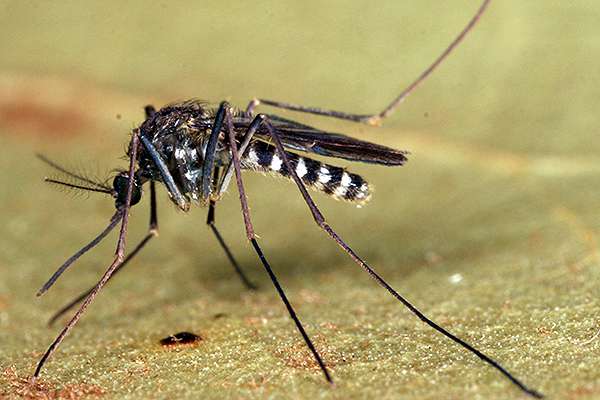Mosquito species may be key to transmitting EEE virus in southeast US

The mosquito species Culex erraticus may play a more significant role in transmitting the Eastern equine encephalitis virus (EEEV) in the southeastern United States than Culiseta melanura, the species most commonly associated with the potentially lethal virus, reports a study led by researchers at the University of South Florida (USF) Global Health Infectious Disease Program. The study was recently published online in the Journal of Medical Entomology.
EEEV, transmitted through the bite of an infected mosquito, can be passed to a wide range of animals including birds, reptiles, amphibians and mammals. But once infected, horses and humans appear to suffer the most adverse affects.
The researchers combined data from field and laboratory studies in Florida with that collected earlier at Tuskegee National Forest in Alabama, where Cx. erraticus is common and Cs. melanura relatively rare. Their collective analysis indicated that Cx erraticus was about half as important as Cs. melanura in transmitting the virus in foci in the southeastern United States.
Despite its inefficiency in transmitting EEEV in a laboratory setting, Cx. erraticus is much more abundant in the southeastern United States than Cs. melanura. The species also feeds on a wider variety of animals than Cs. melanura, which feeds almost exclusively on songbirds for its blood meals.
"Taken together, our latest data suggests we have identified a mosquito species that is an important vector for Eastern equine encephalitis virus in the southeastern United States," said the study's principal investigator Thomas Unnasch, PhD, distinguished health professor and chair of the Department of Global Health, USF College of Public Health.
The favorite avian hosts of Cx. erraticus are wading birds, such as the herons. "We hypothesize that Florida may serve as the reservoir for periodically reintroducing EEEV to the rest of the United States," Dr. Unnasch said. "This species of mosquito may be capable of amplifying the virus in nesting herons and bridging the infection from the birds to uninfected horses and humans."
USF's next step will be to test the hypothesis that herons are the infected birds transmitting EEEV back to the mosquito vectors for wider distribution. Understanding more about the mosquito/bird transmission cycle will help in developing new strategies to counter the spread of the highly pathogenic virus, Dr. Unnasch said.
The disease caused by EEEV is rare in humans—with approximately five to 10 cases reported yearly to the U.S. Centers for Disease Control and Prevention – but more than a third who contract the illness die and many who survive suffer severe brain damage. EEEV poses a greater threat to horses (70 to 90 percent fatality rate), with Florida reporting 136 cases in 2014, the most of any state. No vaccine is approved for human use, and although a vaccine exists for horses many go unvaccinated.
More information: Vector Competence and Capacity of Culex erraticus (Diptera: Culicidae) for Eastern Equine Encephalitis Virus in the Southeastern United States. J Med Entomol. 2015 Dec 9. pii: tjv195. [Epub ahead of print]. www.ncbi.nlm.nih.gov/pubmed/26659606
















